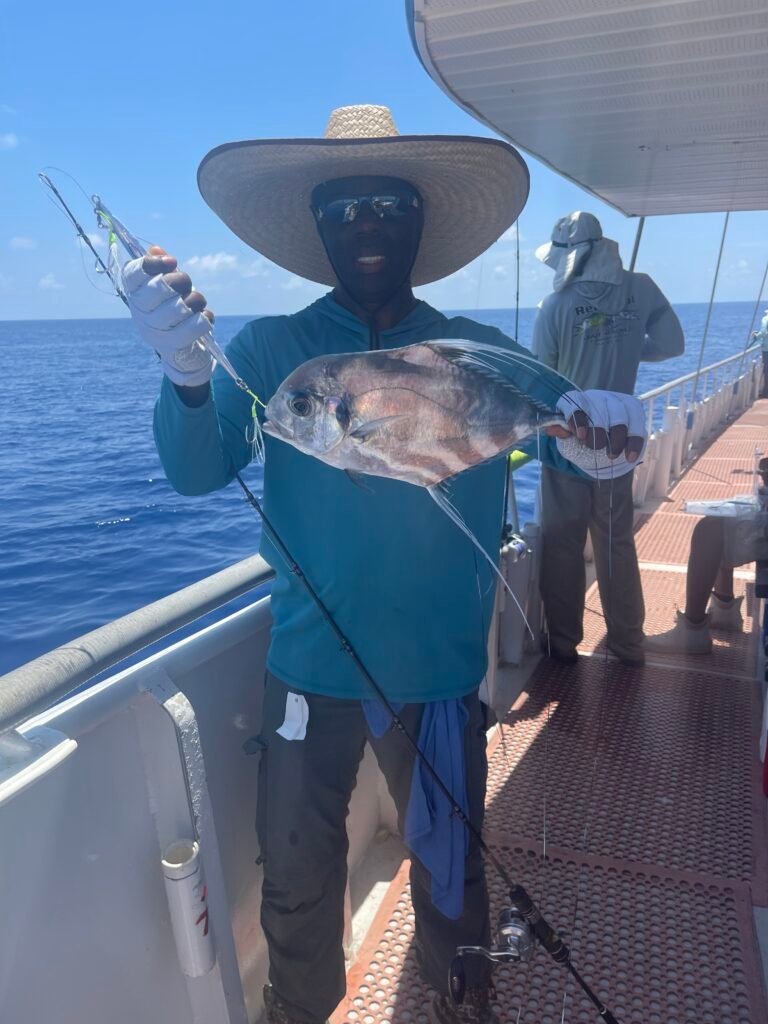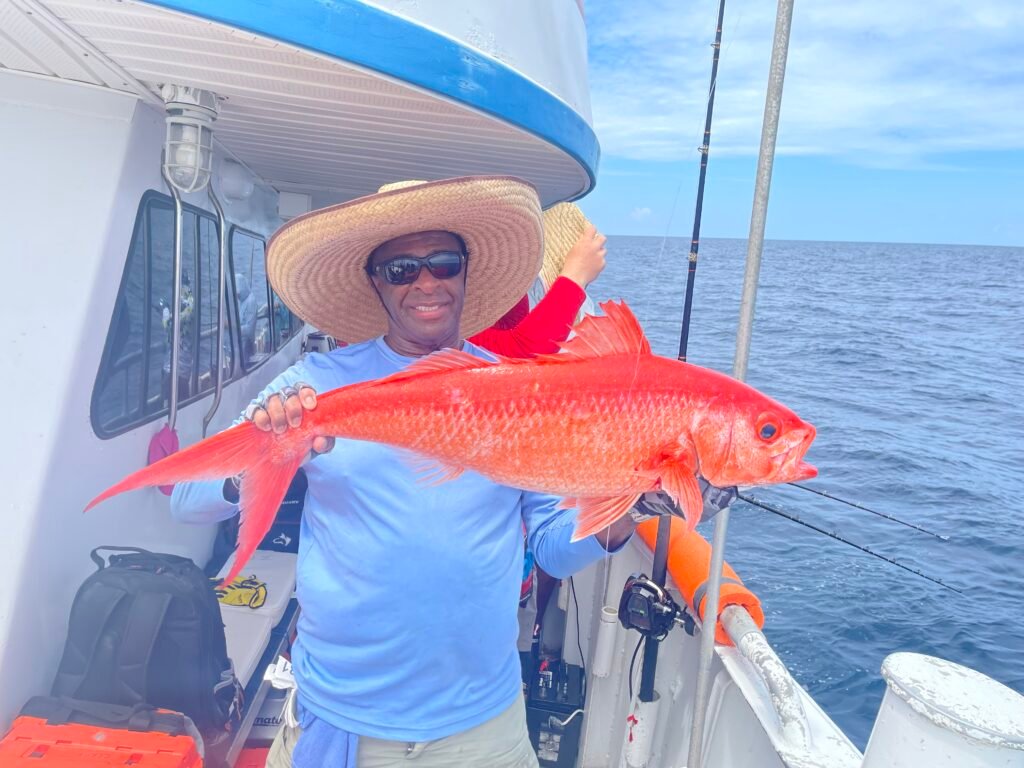Choosing the correct jigging rod depends primarily on the type of fish targeted and the fishing environment. Factors like rod length, power, and action affect performance and comfort during use. Selecting a rod that balances strength and sensitivity is key to effective jigging.

Different rods are designed to handle various jig weights and water depths. Anglers should consider the rod’s material and build quality to ensure durability without sacrificing responsiveness. These elements help transfer the subtle movements of the lure to the angler’s hand for better control.
Weight capacity and handle design also influence the overall experience. Picking the right rod can improve casting accuracy and reduce fatigue, helping anglers stay focused on the catch.
Understanding Jigging Rods
Jigging rods are specialized fishing tools designed to handle the unique motions and loads involved in jigging. Key factors like rod length, action, and material directly influence performance and angler control.
What Makes Jigging Rods Unique
Jigging rods are engineered to withstand repetitive, vertical jerking motions. They feature a sensitive tip for detecting subtle bites and enough backbone to lift heavy jigs and fish.
Typically, these rods have medium to fast action, balancing flexibility and power. Durable components such as corrosion-resistant guides and strong blank materials are common to endure harsh saltwater or freshwater environments.
The grip design often focuses on comfort and control during long periods of vertical jigging, with materials like EVA foam or cork.
Overview of Jigging Techniques
Jigging involves dropping a weighted lure vertically and then moving it up and down to mimic injured prey. This technique requires precision and timing, as well as a rod that can transmit subtle movements.
Different jigging styles include slow pitch, deep drop, and overhead jigging, each requiring specific rod characteristics. For example, slow pitch jigging often needs more rod sensitivity and finesse.
Rods must balance load-bearing strength with responsiveness to maximize hook sets during quick, sharp strikes.
Types of Jigging Rods
Jigging rods fall mainly into three types: slow pitch, deep water, and electric jigging rods.
| Type | Best For | Key Characteristics |
|---|---|---|
| Slow Pitch | Nearshore and vertical jigging | Sensitive tip, moderate power, lighter weight |
| Deep Water | Deep-sea jigging | Heavy backbone, longer length, superior strength |
| Electric | Assisted jigging with electric reels | High durability, often shorter, built for heavy loads |
Choosing the right type depends on fishing depth, jig weight, and target species. Understanding these types helps anglers match rods to their fishing conditions accurately.
Key Factors in Choosing the Right Jigging Rod
Selecting a jigging rod depends on its power, action, material, and length. Each characteristic affects performance, durability, and comfort during fishing. Understanding these factors helps anglers match the rod to their target species and fishing conditions.
Rod Power and Action Explained
Rod power refers to the strength needed to bend the rod and is categorized as light, medium, medium-heavy, and heavy. Light power suits small fish and finesse techniques, while heavy power is necessary for large, strong species.
Action describes how much and where the rod bends. Fast action rods bend near the tip, providing sensitivity and quick hook sets. Moderate action rods bend closer to the middle, offering more flexibility for longer casts and fighting fish.
Matching power and action to the species and lure weight improves control and reduces fatigue. For jigging, medium-heavy power with fast action is common, allowing anglers to feel subtle bites and apply strong hook sets.
Material and Construction Considerations
Most jigging rods are made from graphite, fiberglass, or composites. Graphite rods are lightweight and sensitive but may be less durable under heavy stress. Fiberglass offers durability and flexibility but is heavier and less sensitive.
Composite rods combine graphite and fiberglass, balancing sensitivity and strength. The rod’s guide quality also matters; corrosion-resistant guides with smooth inserts prevent line damage and improve casting.
Pay attention to handle material as well. EVA foam handles are comfortable and provide grip when wet. Cork handles feel traditional but may wear faster. Construction quality influences how long the rod performs in harsh saltwater environments.
Balanced Length and Weight
Jigging rods typically range from 5 to 7 feet in length. Shorter rods provide better control and power in tight spaces, while longer rods allow longer casts and more leverage during fights.
Optimal rod weight matches the angler’s strength and fishing style to avoid fatigue. A heavier rod tires the user quickly but may be necessary for large fish.
The combination of rod length and weight should create a balanced feel in hand, enabling longer fishing sessions without strain. Testing rods for comfort and control before buying is advisable.
Assessing Target Species and Fishing Environments

Choosing the right jigging rod depends heavily on the species targeted and the conditions where fishing takes place. Understanding these aspects ensures suitability in strength, sensitivity, and durability for effective jigging.
Matching Rod to Target Fish
The size and fighting behavior of the target fish dictate the rod’s power and action. Larger species like amberjack or tuna require rods with heavy power and fast action to handle strong runs and quick hook sets. Smaller fish such as sea bass or snapper are better suited for medium or light power rods that provide more sensitivity.
Line weight and lure size also influence rod selection. Heavier lines and larger jigs need sturdier rods, while finesse fishing uses lighter rods for greater feel. Anglers must consider the maximum drag pressure fish can exert to match the rod’s test curve appropriately.
Considering Saltwater vs. Freshwater Jigging
Saltwater rods need corrosion-resistant components such as stainless steel or titanium guides. The rod blank is usually built stronger to withstand larger fish and harsher conditions, with a typical length between 6 and 7 feet for better control offshore.
Freshwater jigging rods often prioritize sensitivity for detecting subtle bites. These rods are typically lighter and may range from 5 to 7 feet, depending on the species. Saltwater rods feature reel seats and grips designed for comfort in wet, abrasive environments, which may differ from freshwater setups.
| Feature | Saltwater Rods | Freshwater Rods |
|---|---|---|
| Materials | Corrosion-resistant, reinforced | Lightweight, sensitive |
| Length | 6 – 7 feet | 5 – 7 feet |
| Power | Medium-heavy to heavy | Light to medium |
| Guides and Seats | Durable, corrosion-resistant | Standard materials |
Pairing With Lures and Reels

Choosing the right jigging rod involves matching it precisely with lures and reels. Proper pairing ensures efficient casting, controlled retrieves, and optimal lure action.
Selecting Compatible Jigs
The jig weight must align with the rod’s power and action. Heavier jigs require medium-heavy to heavy rods for better control and to avoid rod damage. Lighter jigs pair well with light or medium rods to maintain sensitivity for detecting subtle strikes.
Jig size also impacts rod selection. Small jigs (under 60 grams) suit shorter rods (6-7 feet), which offer better maneuverability. Larger jigs (over 100 grams) go with longer rods (7-8 feet) for longer casts and better leverage.
Anglers should consider the target species and fishing depth when choosing jigs, ensuring the rod can handle the load without losing responsiveness.
Choosing the Right Reel
Reels must match the rod’s line capacity and retrieve rate. A high gear ratio reel (6.0:1 or higher) works well with fast-action rods for quicker jig retrieval, essential in aggressive jigging techniques.
Spinning reels are common for light to medium rods, offering smooth drag and ease of use. Baitcasting reels suit heavier rods, providing high control and power during deep jigging.
Drag system quality is critical. A strong, smooth drag prevents line breakage under heavy strain, which is common when fighting larger fish with heavier jigs.
Evaluating Comfort and Ergonomics

Comfort and ergonomics are critical when selecting a jigging rod because prolonged use can cause fatigue and affect performance. The choice of handle design and overall balance determines how easily the rod can be controlled during repetitive motions.
Handle Design and Grip
The handle must provide a secure grip without causing discomfort, especially in wet conditions. Materials like EVA foam and cork are common; EVA offers durability and water resistance, while cork provides a lighter, more sensitive feel.
A thicker handle benefits anglers with larger hands, improving control, while thinner handles suit those seeking more sensitivity. Some rods feature contoured grips that fit the natural curve of the hand, reducing strain.
Non-slip textures or coatings are important to prevent slipping when hands are wet or sweaty. Anglers should also consider the length of the handle, as it affects leverage and casting comfort during jigging.
Balancing Ease of Use
Balance affects how the rod feels during casting and retrieving. A well-balanced rod reduces wrist fatigue and allows precise movements. Weight distribution between the handle and the rod blank is key.
A rod too heavy at the tip strains the wrist, while one too heavy in the handle can feel clumsy. Many rods specify balance points; rods with balance points near where the handle meets the blank offer better control.
The rod’s action and power ratings also influence balance. Stiffer rods with amplified power may require different handling and can change weight distribution. Paying attention to balance ensures longer, more comfortable use during fishing sessions.
Durability and Maintenance
Choosing a jigging rod involves considering its ability to withstand harsh conditions and understanding how to care for it properly. The rod’s materials and features affect corrosion resistance, while regular maintenance ensures performance and extends its life.
Corrosion Resistance Features
Jigging rods used in saltwater require components made from corrosion-resistant materials. Look for rods with stainless steel guides and aluminum oxide inserts that resist salt damage and abrasion.
The blank material also matters. Graphite rods with protective coatings reduce the risk of rust, while rods with composite blanks balance strength and corrosion resistance.
Sealed reel seats prevent saltwater intrusion, protecting internal parts from corroding. These features minimize wear and maintain smooth action over time.
Tips for Longevity
After each trip, rinsing the rod with fresh water removes salt and debris that cause corrosion. Drying it thoroughly before storage prevents moisture buildup.
Regularly inspect guides for cracks or grooves, which can damage the line. Replace damaged guides promptly. Tighten any loose reel seat components to avoid wobbling.
Store the rod in a cool, dry place, ideally vertically or in a rod rack. Avoid leaning it against walls to prevent warping or bending.
Using rod sleeves or cases during transport protects the rod from physical damage and environmental exposure.
Budget and Value Considerations
When selecting a jigging rod, budget plays a key role in determining both quality and features. It is important to balance cost with the rod’s performance to avoid overspending on unnecessary extras.
Basic rods range from $50 to $100 and often serve beginners well. Mid-range rods, priced between $100 and $200, typically offer improved materials and durability. High-end rods, above $200, provide advanced technology and better sensitivity but may not be essential for all anglers.
Value depends on factors such as material quality, brand reputation, and warranty. For example:
| Price Range | Typical Features | Suitable For |
|---|---|---|
| $50 – $100 | Fiberglass or basic graphite, standard guides | Casual or beginner fishers |
| $100 – $200 | Enhanced graphite blends, better reel seats | Frequent anglers |
| $200+ | Premium carbon fiber, advanced tech, lightweight | Serious enthusiasts |
It is wise to consider how often the rod will be used and in what conditions. Spending a little more upfront may reduce replacement costs later.
Accessories and reel compatibility also impact overall value. Choosing a rod that pairs well with an existing reel can save money and improve performance.
Where to Buy a Quality Jigging Rod
A quality jigging rod can be purchased from specialized fishing tackle shops. These stores often carry a variety of rods designed specifically for jigging, providing options tailored to different skill levels and budgets.
Online retailers offer a wide selection of jigging rods. Popular websites like Bass Pro Shops, Cabela’s, and Tackle Warehouse allow buyers to compare brands, read reviews, and check detailed specifications.
Local fishing shops provide personalized service. Staff can offer advice based on regional fishing conditions, which helps when selecting the right rod.
Key places to consider:
- Sporting goods stores
- Dedicated fishing tackle shops
- Online fishing retailers
- Manufacturer websites
Checking product reviews and brand reputation is important regardless of where the rod is bought. A good warranty or return policy is also a positive sign.
Some anglers prefer fishing expos or trade shows to find high-quality jigging rods. These events often feature the latest gear and direct access to manufacturers.
When buying online, confirm the seller’s credibility and shipping policies. This avoids potential issues such as delays or receiving counterfeit products.

Leave a Reply